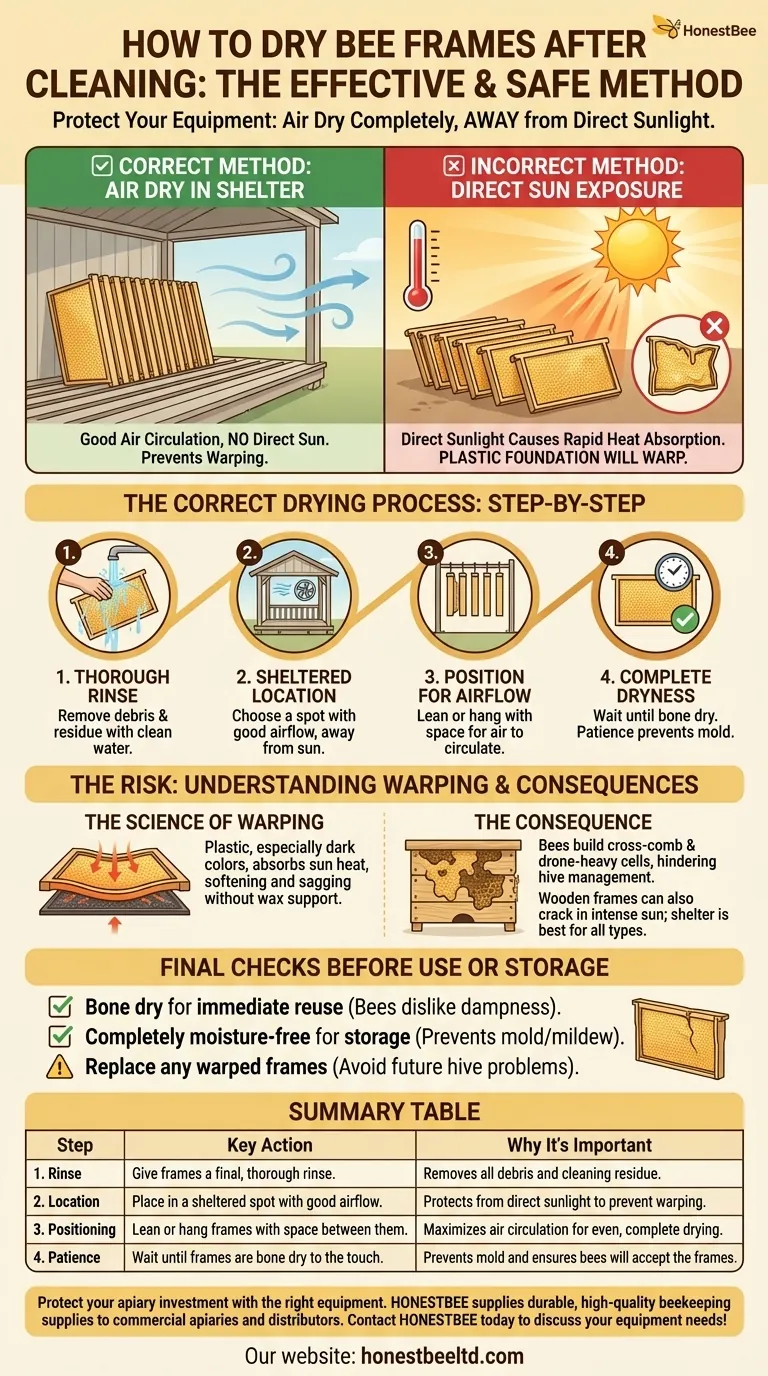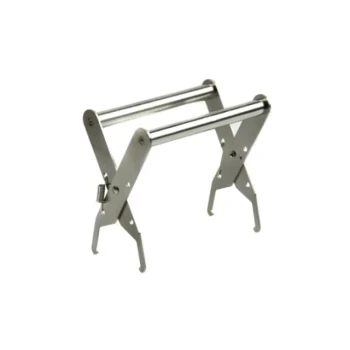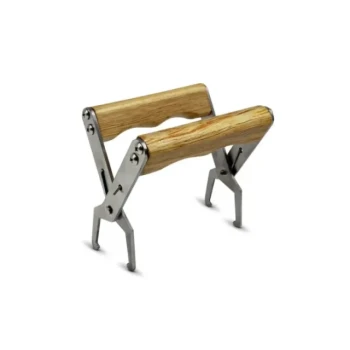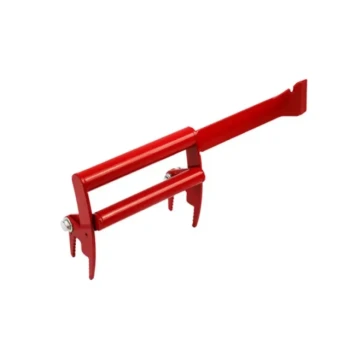The most effective and safest method for drying cleaned bee frames is to air dry them completely away from direct sunlight. This simple step is critical for preventing plastic foundation from warping due to heat, which can render the frame unusable. Proper drying ensures the frames are ready for the bees without any structural defects that could hinder comb building.
The primary goal is not just to get the frames dry, but to do so without compromising their structural integrity. The single biggest mistake is exposing wet plastic foundation to direct sun, as the heat will quickly cause it to warp and sag.

The Correct Drying Process Step-by-Step
Properly drying your frames after cleaning is a straightforward process that protects your investment and ensures the equipment is in perfect condition for your bees.
Start with a Thorough Rinse
After you've scraped and washed the frames, give them a final, thorough rinse with clean water. This removes any lingering debris or cleaning residue.
Choose a Sheltered Location
The ideal drying spot has good air circulation but is out of direct sunlight. A covered porch, an open-air shed, a well-ventilated garage, or even an indoor space are all excellent choices.
Position for Maximum Airflow
Don't stack wet frames flat on top of each other. Instead, lean them against a wall or hang them on a rack, leaving space between each one. This allows air to circulate freely around all surfaces, speeding up evaporation.
Ensure They Are Completely Dry
Be patient and wait until the frames are bone dry to the touch. Putting damp frames back into a hive can be problematic, and storing them while damp will almost certainly lead to mold and mildew.
Understanding the Trade-offs and Risks
The way you dry your frames has a direct impact on their usability and longevity. The primary risk is irreversible damage from improper handling.
The Science of Warping
Plastic foundation, especially when dark-colored, absorbs heat very efficiently. Direct sunlight can easily heat it to a temperature where the plastic softens. Without the support of wax comb, the foundation will sag, buckle, or warp under its own weight.
The Consequence of Damaged Foundation
If you place a warped frame in a hive, the bees will build irregular and problematic comb on it. This can lead to cross-combing, drone-heavy cells, and significant difficulty during hive inspections, disrupting the colony's natural structure.
What About Wooden Frames?
While wooden frames are not susceptible to heat warping like plastic, they can still be damaged. Rapid drying in intense sun can cause the wood to crack or split. The principle of slow, even air drying in a sheltered location remains the best practice for all frame types.
Final Checks Before Use or Storage
Once dry, a final inspection ensures your frames are ready for service. This confirms your cleaning and drying efforts have successfully prepared the equipment for the bees.
- If your primary focus is immediate reuse: Ensure the frames are bone dry, as bees will be hesitant to build on a damp or moist surface.
- If your primary focus is long-term storage: Verify they are completely moisture-free to prevent the growth of mold or mildew, which can ruin the equipment and be harmful to bees.
- If you notice any warping despite your best efforts: It is far better to replace the foundation or the entire frame now than to deal with the hive management problems it will cause later.
Properly drying your frames is a simple investment of time that protects your equipment and supports a healthier, more productive hive.
Summary Table:
| Step | Key Action | Why It's Important |
|---|---|---|
| 1. Rinse | Give frames a final, thorough rinse. | Removes all debris and cleaning residue. |
| 2. Location | Place in a sheltered spot with good airflow. | Protects from direct sunlight to prevent warping. |
| 3. Positioning | Lean or hang frames with space between them. | Maximizes air circulation for even, complete drying. |
| 4. Patience | Wait until frames are bone dry to the touch. | Prevents mold and ensures bees will accept the frames. |
Protect your apiary investment with the right equipment. Properly dried frames are essential for healthy comb building and hive management. HONESTBEE supplies durable, high-quality beekeeping supplies and equipment to commercial apiaries and distributors through our wholesale-focused operations. Let us help you maintain a productive and efficient operation. Contact HONESTBEE today to discuss your equipment needs!
Visual Guide

Related Products
- Assembled Wooden Bee Frames with Plastic Foundation for Durability and Convenience by HONESTBEE
- HONESTBEE Wired and Assembled Wooden Bee Frames Foundation for a Thriving Hive
- Plastic Bee Frame Beekeeping Hive Frames for Wholesale
- Assembled Wooden Bee Frames with Beeswax Foundation Ready to Use by HONESTBEE
- 7 x Auto Bee Flow Hive Frames Plastic Beekeeping Hive Box Supplies
People Also Ask
- What materials are commonly used for beehive frames? Wood vs. Plastic for Your Apiary
- What are the main considerations when choosing between wooden and plastic bee hive frames? Optimize Your Apiary's Efficiency
- Can I reuse old frames? A practical guide to saving money and reducing waste
- Can beekeepers switch between wooden and plastic frames? Optimize Your Hive's Performance
- What are the advantages of wooden frames over plastic frames? Flexibility, Natural Materials & Repairability



















